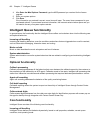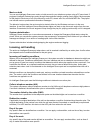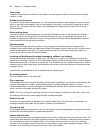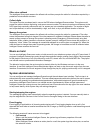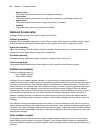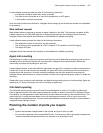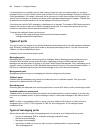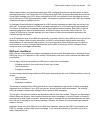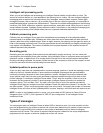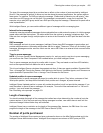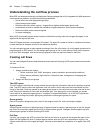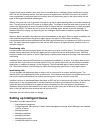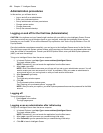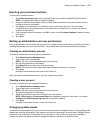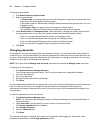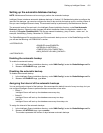424 Chapter 17 Intelligent Queue
Intelligent call processing ports
When you use an intelligent call processing port, Intelligent Queue handles a single caller at a time. The
amount of time that the port is in use depends on the options given to a caller. You can configure intelligent
messaging ports to execute the following actions: play messages, accept callback requests, collect digits,
manage the system, offer a submenu, go to another point in the tree, replay the greeting, or route callers to
predefined destinations (queue/voice mail/extension). The action the system takes depends on the following
conditions: ANI, DNIS, redirection, schedule, queue conditions, and system mode. When the port is used to
accept callback requests, Intelligent Queue collects the caller’s information on the intelligent messaging port,
but the actual processing of the callback takes place on a separate, dedicated callback port.
Callback processing ports
Callback ports are Intelligent Queue ports that are dedicated to processing all of the collected callback
requests based on a callback plan. Callbacks are action plans that can be associated with each individual
request, rather than with a predefined port. When an agent answers, the system gives the agent the option to
listen to the message or place the call. Once the agent places the call, the callback port begins processing the
next request in the database. The number of callback ports required depends on the expected number of
callback requests to be processed.
Recording ports
Recording ports are Intelligent Queue ports that are dedicated to quality monitoring. You can initiate call
recording from the Intelligent Queue user interface. Using Intelligent Queue, a supervisor enters an Agent ID,
extension number, or Agent Group ID to request that the current call or the next call received be recorded.
Once the recording completes, the system notifies the user of the success (or failure) of the request, as well
as the file name with which the call recording has been stored.
Updated position in queue ports
A port can play more than one updated position in queue message, however, it sends that message to one
caller at a time only. Updated position in queue ports are Intelligent Queue ports that are dedicated to
continually informing customers of their current position in queue. Intelligent Queue tells customers their
queue position when they first enter queue and keeps customers updated throughout their wait as their
position changes. For example, Intelligent Queue states “Three” when the customer is third in line to be
answered. As the customer’s position in queue changes, Intelligent Queue will continue to update the
customer, stating “Two” and then “One.” You add a .wav file to play in front of the position provided by
Intelligent Queue and you configure how often Intelligent Queue will update the customer. For example, “You
are caller number” “Three” can be configured to play once every minute. You specify the number of customers
Intelligent Queue will inform of their Updated position in queue, keeping in mind that each call requires a port.
NOTE: In order to use Updated position in queue, you must enable all HCI options on Class of Service
Assignment form 1 (COS 1). See "Appendix A 3300 ICP port configuration" in the Intelligent Queue
Installation Guide.
Types of messages
You can program ports on Intelligent Queue as either RAD or interactive ports. You must consider how the
ports are programmed on the system as well as call volume when determining the number of ports required.
The number of required RAD ports is based on the number of dedicated ports per distinct messaging
sequence and call volume. The number of required interactive ports is based on how many telephones are
programmed on the system as a device (telephone) and the call volume.



